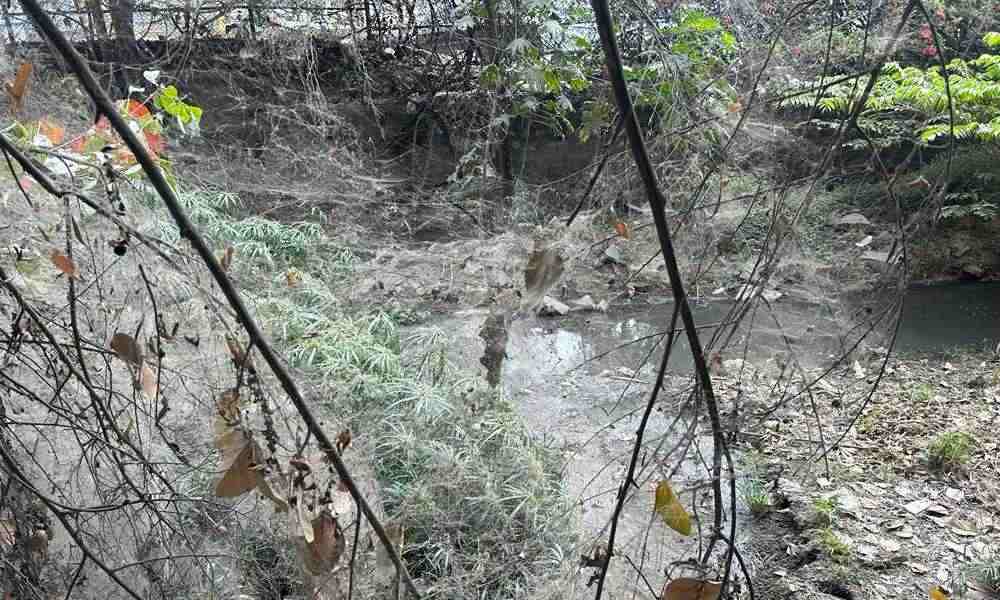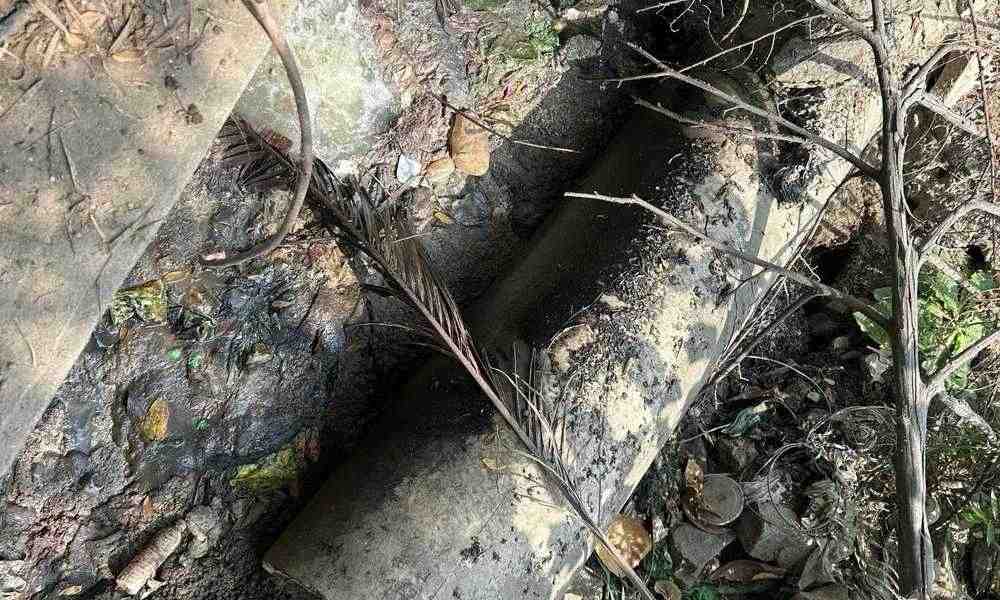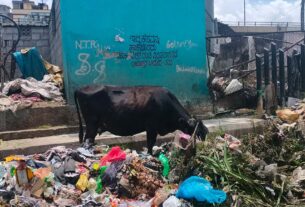The village series project completion deadline, initially set for mid-January 2024 by both Bruhat Bengaluru Mahanagara Palike and Bangalore Water Supply and Sewerage Board has been missed resulting in sewage water entering the lake
The 48-acre Kaikondrahalli lake in Bengaluru, once a spot for migratory birds, is now polluted with stagnant water and dumped waste emanating a foul smell and causing health problems like dengue to residents in the area.
Sabera Praveen, park duty manager, who has been working in Kaikondrahalli Lake for eight years said, “For over a year now, the water has been stagnant and the smell is unbearable. It’s tough to do our duties here, especially since it’s close to the park entrance. If the salary wasn’t good , I would’ve left this job a long time ago. It’s the main thing that’s been keeping me around.
The area around the lake is part of the Village Series project by which the Bangalore Water Supply and Sewage Board (BWSSB) and the Bruhat Bengaluru Mahanagara Palike (BBMP) plan to supply water and underground drainage facilities to 110 villages around the city. In this connection, they plan to divert the sewage away from the lake to the underground drainage system. Rajesh S.V., south zone engineer at BBMP said that the government approved a sewage diversion pipeline in 2007 to protect the lake’s cleanliness. However, delay by BWSSB halted its progress.

A view of Kaikondrahalli Lake showing the impact of pollution and stagnant water.
“Kaikondrahalli lake is part of our village series project and we are in touch with BWSSB regarding the completion of the project. As soon as they lay down the sewage diversion pipeline we will start cleaning the area around the lake. I think it will take four to five months more.” Rajesh added.’
Munith Reddy, who lives near the lake said, “Sewage has been going into the lake for over a year, contaminating the water. It always smells bad. We told the BWSSB a few months ago, and they brought pipes to fix it, but nothing has happened yet. They say the work will start again soon.”
Pradeep B, executive engineer at BWSSB said, “We have achieved a 50 percent milestone in the project. The pending tasks primarily revolve around the finalization of the sewage diversion pipeline by BBMP. Our objective is to initiate the supply of water to the 110 villages by May 2024. We anticipate that the resolution of the stagnant water issue will swiftly follow upon the successful completion of this crucial phase.”
Rajesh added that the BBMP will only be able to start the cleaning process of the pond when BWSSB completes laying down of water pipes for the village series project.
The project completion deadline, initially set for mid-January 2024 by both BBMP and BWSSB, , has not been met. This delay has led to health concerns among residents in the area.
Vasu Kumar, guard at Kaikondrahalli Lake said, “The lake water is so bad that people are skipping their evening walks. The stagnant water is causing persistent health issues, and I’m now a regular patient at a nearby clinic. It’s really affecting our lives.”
Sushant Kumar, coconut seller near the lake said, “Setting up the pipelines is no excuse to not clean the lake, we’ve complained to the BBMP office in Bellandur several times, hoping for things to get better. They send someone to check, promising to clean up the mess, but by the end of the day, it’s heartbreaking to see that nothing really changes – it’s still just as bad as before.”

Abandoned pipe kept in the dirty area
Tabrez S., who works at Wipro and has stopped his regular walk around the lake due to the smell and the pollution said, “BBMP recently constructed a small bridge on the lake, impacting the natural water flow. In addition to untreated sewage entering the lake, a considerable amount of garbage litters the shores. Unfortunately, cleaning efforts have been neglected for a while, resulting in an unbearable stench. Consequently, the number of lake visitors has noticeably declined over the past month, including me.”
Mr. Biplob Chatterjee, hydrologist, said, the stagnation of water in this specific area of the lake, coupled with the influx of untreated sewage, creates a breeding ground for disease vectors. If not promptly addressed, this situation could significantly elevate the risk of waterborne diseases, including but not limited to dengue.”
He further said, “The correlation between stagnant water, waste accumulation, and the potential for disease transmission is a well-established scientific fact. Therefore, urgent and targeted efforts to clean and restore this part of the lake are imperative to mitigate the health risks posed to the local population.”




